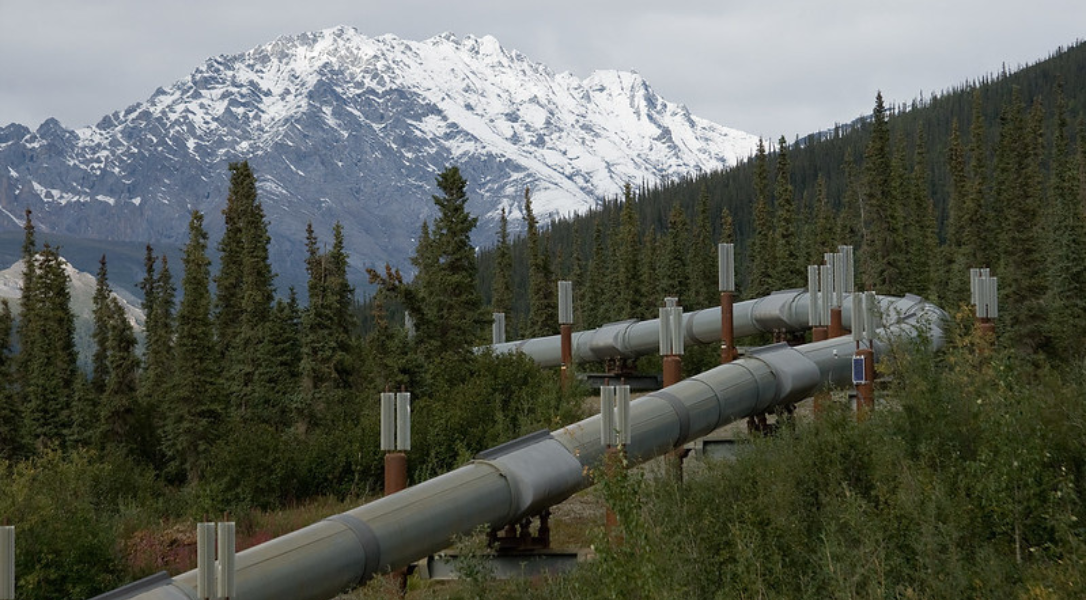Three Key Takeaways:
- The Alaska Pipeline, built to transport oil from Prudhoe Bay to Valdez, stands as a testament to American ingenuity and determination, overcoming fierce opposition from environmentalists who feared its impact on wilderness and wildlife.
- The 1973 energy crisis highlighted the urgent need for American energy independence, leading to the pipeline’s approval and construction, which transformed the nation’s energy landscape and reduced reliance on foreign oil.
- Despite its cost and challenges, the pipeline has been a key contributor to U.S. domestic oil production, demonstrating that American energy independence is achievable when the country prioritizes its own resources.
Environmentalists have been waging war on American energy for decades.
They’ve tried to block every attempt to make America energy independent.
And the Alaska Pipeline saga proves that radical environmentalists would rather see Americans suffer than drill for oil on American soil.
The Alaska Pipeline turns 50 today as America rediscovers energy independence
In 1968, the Atlantic Richfield Company (ARCO) made a discovery that would change America forever.
They found the largest oil field in the United States at Prudhoe Bay on Alaska’s northern coast.
But getting that precious oil from the frigid North Slope to American consumers wouldn’t be easy.
In 1970, three oil giants – Atlantic Pipeline Company (now ConocoPhillips), Humble Oil Pipeline Company (now ExxonMobil), and BP Oil Corporation – joined forces to form the Alyeska Pipeline Service Company.
Their mission was clear: build a pipeline to transport this valuable American resource to market.
The companies organized the Trans Alaskan Pipeline System (TAPS) committee and set to work on an 800-mile pipeline from Prudhoe Bay to the port of Valdez.
The Left mobilized to block American energy independence
The radical environmentalist lobby immediately sprang into action.
Environmentalists were apoplectic at the thought of a pipeline bringing affordable energy to American families.
They claimed it would destroy wilderness and harm wildlife, using the same fear-mongering tactics they deploy today against fracking and offshore drilling.
Alaska Natives were concerned about potential impacts on their lands and water supplies.
But the real turning point came when America faced a devastating energy crisis in 1973.
The 1970s energy crisis proved America needed its own oil
When Arab OPEC nations cut off oil to the West during the Yom Kippur War, Americans faced skyrocketing prices and nationwide fuel shortages.
Gas stations had lines stretching for blocks. Some ran completely dry.
President Richard Nixon introduced “Project Independence” in November 1973 to address the crisis, calling for reduced fuel consumption and a nationwide maximum speed limit of 50 MPH.
Nixon understood what liberals still refuse to accept today – America needs its own energy.
“Largely because of the war, we must face up to the stark fact that we are heading toward the most acute shortages of energy since the Second World War,” Nixon warned.
The energy crisis made the pipeline’s approval inevitable. Americans were tired of being held hostage by foreign oil producers.
In November 1973, the Senate approved the Trans-Alaska Pipeline Authorization Act, but only after Vice President Gerald Ford cast the tie-breaking vote.
Americans got to work building energy independence
Construction officially began on March 27, 1975, when workers welded the first section of the pipeline into place.
Thousands of American workers relocated to Alaska for the high-paying jobs, escaping the recession plaguing the mainland.
The project faced enormous challenges. Workers had to navigate the treacherous Atigun Pass and Keystone Canyon, improvising construction techniques to ensure the pipeline’s stability.
Towns along the route boomed. Valdez saw its population explode from 1,350 in 1974 to over 8,200 by 1977.
The economic growth was remarkable, with businesses thriving as workers spent their hard-earned wages.
After nearly two years of American ingenuity and determination, oil began flowing on June 20, 1977, reaching Valdez on July 28.
The cost of energy independence
The pipeline’s final price tag exceeded $8 billion – far more than the original $860 million estimate.
Tragically, 32 workers lost their lives during construction.
But the pipeline transformed America’s energy landscape. It has transported more than 17 billion barrels of oil since it opened.
At its peak in the 1980s, the pipeline carried 2 million barrels per day, accounting for 20% of U.S. domestic oil production.
Today, the Alaska Pipeline stands as a monument to American determination and innovation – a powerful reminder that we can achieve energy independence when we put America first.
The next time you hear environmentalists claiming we can’t drill our way to energy independence, remember the Alaska Pipeline proved them wrong.
The same radical activists who tried to block the pipeline then are using the same failed arguments today against American energy production.
They were wrong then. They’re wrong now.
Are you enjoying 24/7’s deep dives into recent and not-so-recent history? Would you like to see more stories like this one? If so, send a note to news@247politics.net and let our Editorial Team hear from you today!
Keep an eye on your inboxes every Thursday and Saturday for new editions of “Today in History” from the 24/7 team!










